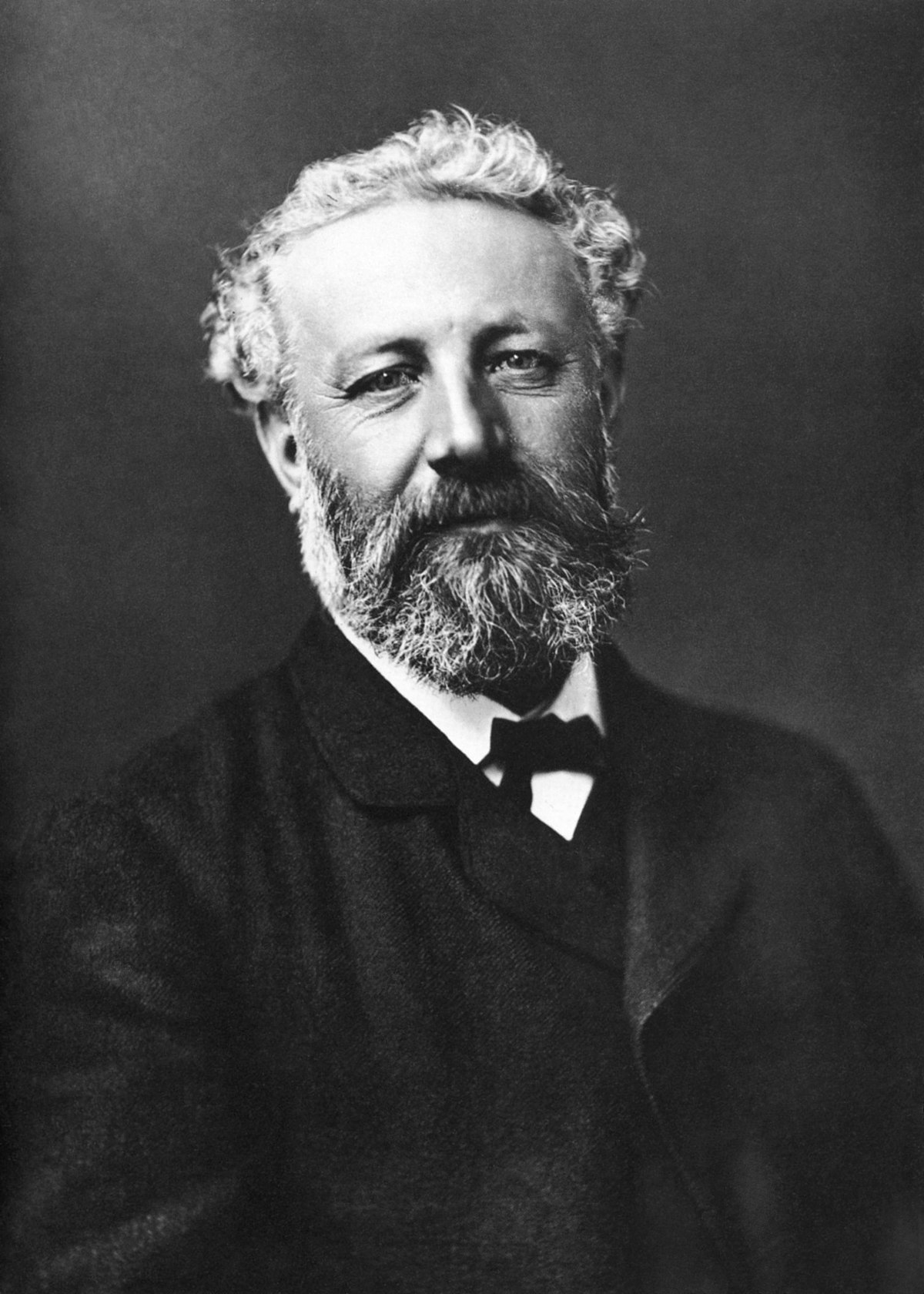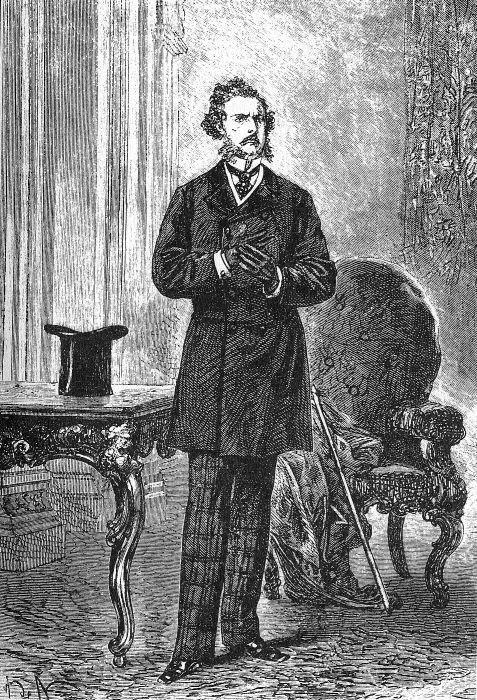Overview of the Novel
Around the World in 80 Days
Around the World in 80 Days by Jules Verne follows the story of Phileas Fogg and his valet, Passepartout, as they attempt to circumnavigate the globe and win a wager with Fogg's elite club members. Fogg has bet them that he can make it around the world and back to London within 80 days. Pursued by a detective who believes Fogg has robbed a bank before skipping town, the pair travels the world attempting to beat the clock, taking all forms of transportation from elephants to locomotives. Over the course of their adventure, Fogg spends all of the money that he eventually wins by winning the bet, but they manage to make it back to London in time. Upon returning to London, Fogg returns to his normal life, taking an Indian woman he saves on his journey for his bride.
For more information about the novel, click here.
To read or download the full novel, visit Project Gutenberg.
Jules Verne
Jules Verne was born in Nantes, France in 1828. As a young man in boarding school, he began writing short stories. Despite his affinity for writing, his father sent him to law school as a young man. After earning his law degree, Verne stayed in Paris to further his writing. His father pressured him to start his law career, but Verne took a position as secretary of the Théâtre‑Lyrique. It did not pay well, but it provided him an opportunity to get his written works out into the world. After marrying a widow with two children, Verne realized he needed to find a new job that provided the financial stability his family needed, so he became a stockbroker. He did not abandon his writing at this time, however, as he published his first book while working as a stockbroker. Verne and his wife took a trip to the British Isles, one of around 20 they would take, and the voyage had a huge impact on his writing. In 1862, Verne met publisher and editor Pierre‑Jules Hetzel. With Hetzel's help, Verne's writing career took off. He wrote mostly stories of adventure, often including futuristic elements people of the day could only dream of. As he found financial stability in his writing career, he bought his own ship. He and his wife spent their time sealing the seas and exploring the world. In 1869, one of his most memorable novels, 20,000 Leagues Under the Sea, was published. His most famous novel, Around the World in 80 Days, followed in 1872. Verne continued writing adventure stories and was able to live comfortably off of the money they brought in. In 1886, Verne was shot in the leg by his nephew, Gaston. This injury resulted in a limp that plagued Verne for the rest of his life. His publisher, Hetzel, died a week after Verne was shot. The next year, Verne's mother died. After these tragic events in his life, his novels took on a darker tone, exploring the drawbacks of technology. Verne died at home on March 24, 1905 of diabetes. Overall, Verne wrote more than 60 books (including the 54 novels that made up the Voyages Extraordinaires). He also wrote dozens of plays, short stories, and librettos.
Information sourced from Biography.com.
Characters of the Novel
✣ Phileas Fogg
Fogg is the main character, a mysterious and rich man of forty, tall and handsome with light hair and whiskers. He is never flustered by any event, a gentleman of the Reform Club of London who is interested in science and whist. He orders his life precisely by the clock, and makes a bet with fellow club members that he can travel around the world in the least amount of time it takes. He bets half his fortune on it and takes the other half with him in a carpet bag, going by train and steamboat around the world in 80 days. He travels with his French servant Passepartout and is followed by Detective Fix who thinks his mysterious fortune was stolen. Although Fogg appears to be uninterested in other people, he rescues Princess Aouda in India and marries her at the end of the journey. He is also generous to his servant Passepartout and rescues him several times though it puts his mission in jeopardy. Fogg is not interested in money but in knowledge. He is kind, giving money to a poor woman on the street and even giving money to Fix who is his enemy. Magnetic and bold, he draws others to him who help his cause.
Information sourced from this guide to the novel.
✣ Jean Passepartout
Passepartout is the French servant Fogg hires before they leave London. He is about thirty and single, with multiple past occupations, such as acrobat, gymnast, valet, fireman. He is looking for stability in life as the valet of an English gentleman since the English are known for their regularity. He goes through 10 irregular English masters before finding his ideal, Fogg. Passepartout is an emotional man of simple perception. He does not comprehend the mind of Fogg, but he is touched by his integrity and kindness to others, despite his apparent coldness. He becomes loyal to Fogg and desires to help him win the bet, though he often complicates the journey, such as getting drugged by the detective following him and not telling Fogg of the boat schedule change, and not telling Fogg about Fix. He is offered part of the reward money by Fix to turn in his master to Scotland Yard for the robbery, but he refuses to betray Fogg. He is the one who rescues Princess Aouda and who detaches the engine from the train to save it from Indians. In rescuing Passepartout from Indians, Fogg almost loses the bet.
Information sourced from this guide to the novel.
Learn more about the history of Victorian-era colonialism during the 1800s
Learn more about the culture surrounding 19th-Century British Imperialism



This page compiled by Kaytlin Jacoby & Angie James.